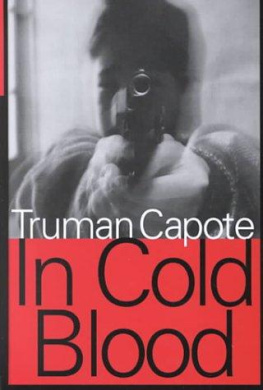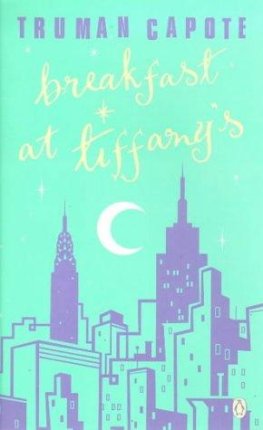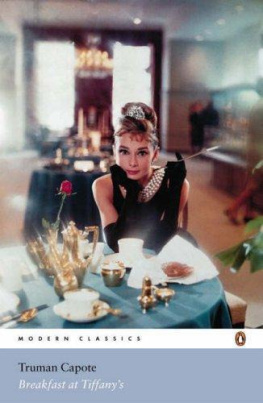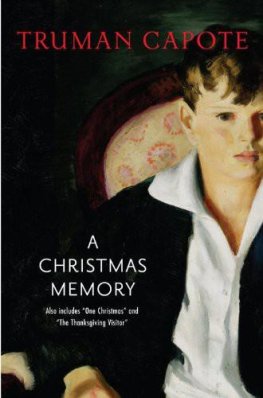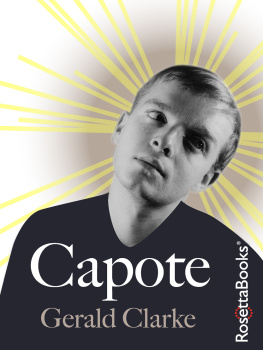Truman Capote - Other Voices, Other Rooms
Here you can read online Truman Capote - Other Voices, Other Rooms full text of the book (entire story) in english for free. Download pdf and epub, get meaning, cover and reviews about this ebook. year: 2004, publisher: The Modern Library, genre: Detective and thriller. Description of the work, (preface) as well as reviews are available. Best literature library LitArk.com created for fans of good reading and offers a wide selection of genres:
Romance novel
Science fiction
Adventure
Detective
Science
History
Home and family
Prose
Art
Politics
Computer
Non-fiction
Religion
Business
Children
Humor
Choose a favorite category and find really read worthwhile books. Enjoy immersion in the world of imagination, feel the emotions of the characters or learn something new for yourself, make an fascinating discovery.

- Book:Other Voices, Other Rooms
- Author:
- Publisher:The Modern Library
- Genre:
- Year:2004
- Rating:4 / 5
- Favourites:Add to favourites
- Your mark:
- 80
- 1
- 2
- 3
- 4
- 5
Other Voices, Other Rooms: summary, description and annotation
We offer to read an annotation, description, summary or preface (depends on what the author of the book "Other Voices, Other Rooms" wrote himself). If you haven't found the necessary information about the book — write in the comments, we will try to find it.
Other Voices, Other Rooms — read online for free the complete book (whole text) full work
Below is the text of the book, divided by pages. System saving the place of the last page read, allows you to conveniently read the book "Other Voices, Other Rooms" online for free, without having to search again every time where you left off. Put a bookmark, and you can go to the page where you finished reading at any time.
Font size:
Interval:
Bookmark:
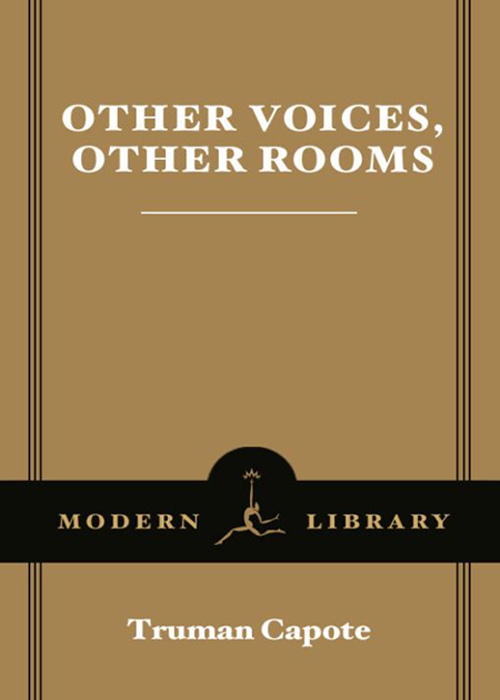

Table of Contents
FOR NEWTON ARVIN
The heart is deceitful above all things, and desperately wicked.
Who can know it?
JEREMIAH 17:9
INTRODUCTION
John Berendt
As Truman Capote remembered it years later, the idea for Other Voices, Other Rooms came to him in the form of a revelation during a walk in the woods. He was twenty-one, living with relatives in rural Alabama, and working on a novel that he had begun to fear was thin, clever, unfelt. One afternoon, he went for a stroll along the banks of a stream far from home, pondering what to do about it, when he came upon an abandoned mill that brought back memories from his early childhood. The remembered images sent his mind reeling, causing him to slip into a creative coma during which a completely different book presented itself and began to take shape, virtually in its entirety. Reaching home after dark, he skipped supper, put the manuscript of the troublesome unfinished novel into a bottom bureau drawer (it was entitled Summer Crossing, never published, later lost), climbed into bed with a handful of pencils and a pad of paper, and wrote: Other Voices, Other Roomsa novel by Truman Capote.... Now a traveler must make his way to Noon City by the best means he can...1
Whether or not Capotes remarkable first novel came to him as he said it did, in a spontaneous flow of words as if dictated by a voice from a cloud, the work that emerged two years later was as lyrical and rich in poetic imagery as if it had been written by a writer possessed.
The setting of Other Voices, Other Rooms is the rural South of Capotes youth rather than New York, where Summer Crossing had been set. Capotes impressionist prose style creates an atmosphere of dreamlike elegance: the white afternoon was ripening towards the quiet time of day when the summer sky spills soft color over the drawn land; and at night, a vine-like latticework of stars frosted the southern sky. His narrative glows with an abundance of colors, some of which seem to have been invented on the spot: The wagons rickety wheels made dust clouds that hung in the green air like powdered bronze. He is no less ingenious in drawing character portraits, for example, the century-old black mule-driver, Jesus Fever, whose face was like a black withered apple, and almost destroyed; his polished forehead shone as though a purple light gleamed under the skin. As for the crotchety stepmother, Miss Amy: Her voice had a weary, simpering tone; it struck the ear like the deflating whoosh of a toy balloon. Capote fills the page with evocative images, one after the other, from fairy-tale sweet to downright eerieas in the swampy ruins of the Cloud Hotel where in the ballroom a fallen chandelier jeweled the dust, and weather-ripped draperies lay bunched on the waltz-waved floor like curtsying ladies; and where water-snakes slithering across the strings made night-songs on the ballrooms decaying piano.
This is bravado wordplayexuberant, brilliant, daring, and unabashedly ostentatious. The genre is pure Southern Gothic, set deep in a lush and mysterious terrain full of Spanish moss, overgrown gardens, and swamplike hollows where tiger lilies bloom the size of a mans head. Capote christens his places with names that carry allegorical nuances: Noon City, Paradise Chapel, Skullys Landing, the Cloud Hotel, the Drownin Pond. His characters are a collection of misfits, eccentrics, and oddballs, any one of whom would have been at home in virtually any story written by William Faulkner, Carson McCullers, Tennessee Williams, or Flannery OConnoreven characters with minor roles: the one-armed barber; the traveling-show midget, Miss Wisteria; and the saloon-keeper, Miss Roberta, who toys with the single hair growing out of a wart on her chin.
Other Voices, Other Rooms is the story of Joel Harrison Knox, a thirteen-year-old boy who was raised in New Orleans and, after his mothers death, is sent to the rural South to live with his father who had abandoned him when he was an infant. Joels journey to his new home takes him to ever-smaller towns over less-traveled roads through yet murkier landscapes to the overgrown and nearly deserted Skullys Landing. There, in a half-ruined mansion with neither electricity nor indoor plumbing, he meets his father, a bedridden, near-mute invalid who communicates by tossing red tennis balls from his bed onto the floor. Other members of this strange household include Joels strait-laced stepmother, her effeminate silver-tongued cousin Randolph, the old black mule-driver, and the mule-drivers granddaughter, Missouri Zoo Fever.
Capote at first denied that Other Voices, Other Rooms was autobiographical. And yet, like the fictional Joel Knox, Capote had been born in New Orleans, longed to see his absent father, was sent as a young boy into the rural South to live with relatives, and took his mothers last name, not his fathers. Capotes description of Joel as too pretty, too delicate and fair-skinned could have been a self-portrait, as could the observation that a girlish tenderness softened his eyes and that his voice was uncommonly soft. Capote was taunted for his effeminacy; Joel is called sissy-britches. The tomboy Idabel is based on Capotes childhood friend the writer Harper Lee, and the fretful Miss Amy is reminiscent of one of the relatives Capote lived with in Alabama, Callie Faulk.
Twenty years after publication, Capote recanted somewhat. He admitted having come to realize that Other Voices had been an unconscious, intuitive attempt to exorcise his demons. I was not aware, he wrote in the November 1967 Harpers, except for a few incidents and descriptions, of its being in any serious degree autobiographical. Rereading it now, I find such self-deception unpardonable.2
To call it unpardonable seems a bit harsh. In order to create fictional characters and give them thoughts, speech patterns, mannerisms, and motives, writers have little choice but to draw on people they have known, including themselves, even though they may have no intention of writing an autobiography. Capote had done so repeatedly in his short stories. No matter how vivid the writers imagination, it is inevitable that his characters, however original they may seem on the page, will have antecedents in the real world, as stored in some form somewhere in the authors mind. So it is not surprising to find traces of an authors psychological DNA in his fictional charactersall of his fictional characters, not just the ones who resemble himself.
Few first novels have created as much prepublication excitement as Other Voices, Other Rooms. Before its release in January 1948, the twenty-three-year-old Capote had published only a handful of very good short stories, and he had already become the talk of literary circles. Twentieth Century-Fox had optioned the movie rights for Other Voices sight unseen, and Life magazine had given Capote the most prominent display in a feature about young American writers, even though all the other writers covered in the story, including Gore Vidal and Jean Stafford, were better known at the time and had already published at least one novel. 3
It was not solely on the basis of Capotes then-meager literary output that he managed to find himself in the spotlight. He had already become something of a personality in New York, and a very strange personality at that. He stood a diminutive five feet three, had a childlike face, blond bangs, a pixieish manner, a knack for drawing attention to himself, and an unflagging determination to be famous. Brendan Gill recalled that when Capote worked as a copyboy at
Next pageFont size:
Interval:
Bookmark:
Similar books «Other Voices, Other Rooms»
Look at similar books to Other Voices, Other Rooms. We have selected literature similar in name and meaning in the hope of providing readers with more options to find new, interesting, not yet read works.
Discussion, reviews of the book Other Voices, Other Rooms and just readers' own opinions. Leave your comments, write what you think about the work, its meaning or the main characters. Specify what exactly you liked and what you didn't like, and why you think so.

